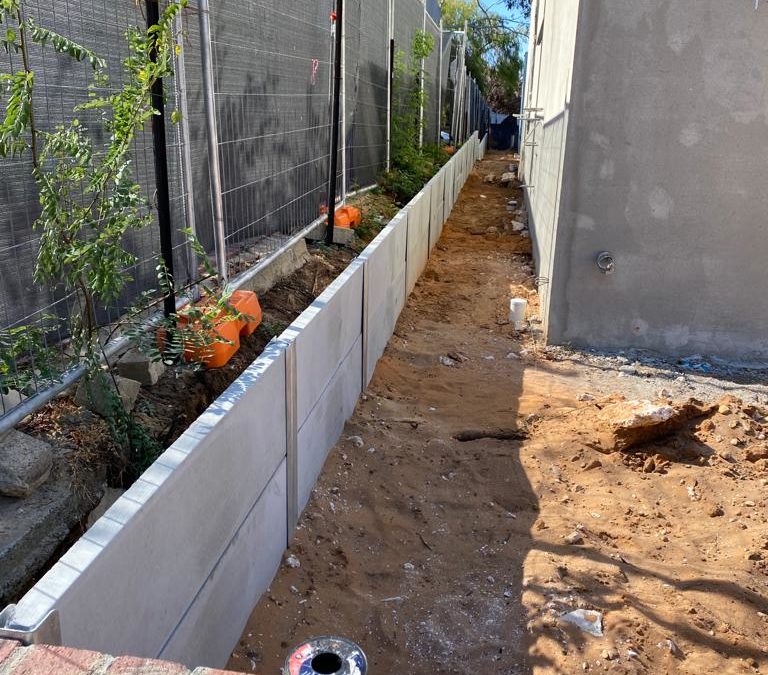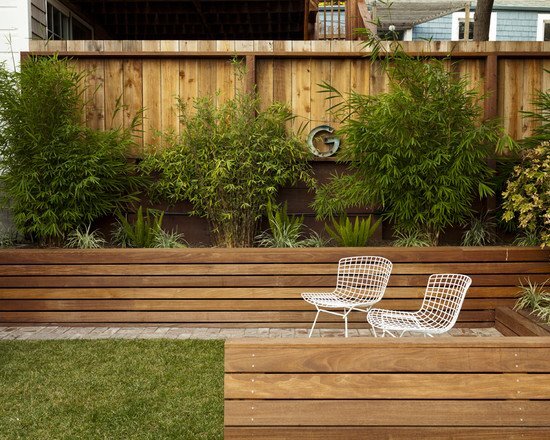Keeping Walls Sunshine Coast: Cutting-edge Solutions for Erosion Control
Keeping Walls Sunshine Coast: Cutting-edge Solutions for Erosion Control
Blog Article
Guaranteeing Structural Integrity: The Importance of Appropriately Created Preserving Walls in Stopping Slope Failure
In the world of civil engineering and building, the significance of effectively created retaining walls in averting incline failure can not be understated. These frameworks function as crucial safeguards against the natural forces that can undercut inclines and create potentially disastrous effects. Understanding the thorough design considerations, building and construction techniques, and upkeep techniques connected with keeping wall surfaces is essential in guaranteeing their efficacy and long life. By checking out the elaborate interplay in between these elements, a much deeper understanding of the pivotal role that retaining wall surfaces play in maintaining structural honesty and protecting against incline failing arises. Retaining Walls Sunshine Coast.
Role of Retaining Walls in Stability
The indispensability of maintaining wall surfaces in guaranteeing incline stability is critical in civil design techniques. Keeping walls serve an essential role in preventing dirt erosion, taking care of water drainage, and preserving the structural stability of slopes. By supporting upright or near-vertical grade changes, maintaining walls assist to rearrange side stress put in by the soil, consequently lowering the threat of incline failure.
One key function of maintaining walls is to combat the pressure of gravity acting upon the dirt mass behind them. This is attained via proper layout and building, which considers aspects such as dirt kind, wall surface elevation, water drainage stipulations, and potential additional charge lots. By successfully maintaining dirt within defined limits, these structures help to maintain slopes and protect against landslides.
Additionally, retaining wall surfaces add to the appearances of landscapes while supplying useful advantages. They can create terraced levels for landscaping, support roadways or frameworks on hills, and boost the overall use of sloped terrain. Basically, keeping wall surfaces play a vital duty in preserving slope security and making sure the safety and security and long life of civil design projects.
Factors Affecting Wall Efficiency
Factors that affect the effectiveness of maintaining wall surfaces include dirt buildings, wall style, and external tons. Soil residential or commercial properties play an essential function in establishing the stability and performance of a maintaining wall. Elements such as dirt type, cohesion, inner friction angle, and groundwater conditions can impact exactly how well a wall surface keeps the soil behind it. The design of the keeping wall surface is another key variable that affects its efficiency. Correct wall style considers aspects like wall surface elevation, wall surface type (e.g., gravity wall surfaces, cantilever wall surfaces), reinforcement materials, drainage systems, and construction strategies to make sure the wall surface can endure the lateral stress put in by the preserved soil. Furthermore, external lots, such as additional charge loads from adjacent structures or traffic, seismic forces, and water pressure, should be very carefully assessed during the design and building phases to guarantee the wall surface can effectively resist these outside forces. By taking into consideration these factors comprehensively, engineers can create maintaining walls that properly protect against slope failure and make sure long-term structural integrity.
Layout Considerations for Preserving Walls
Incorporating the crucial aspects of soil buildings and outside tons right into the architectural design procedure is necessary for developing efficient preserving walls that guarantee slope security. When making preserving wall surfaces, designers need to meticulously review the qualities of the bordering dirt, including its water drainage, kind, and compaction buildings. Recognizing these soil properties is critical for determining the suitable wall surface thickness, reinforcement, and height needed to hold up against the lateral stress applied by the dirt mass.
In addition, external loads such my website as surcharge loads from close-by structures or web traffic, in addition to seismic pressures, need to be considered throughout the layout phase. These lots can substantially influence the security and efficiency of a retaining wall, necessitating making use of correct design methods and products to alleviate possible failure dangers.
In addition, the option of appropriate products, such as concrete, stone, or hardwood, must straighten with the site-specific problems and aesthetic requirements. Factor of safety and security factors to consider, drain arrangements, and construction methods are additionally crucial aspects that affect the overall design and capability of preserving wall surfaces in protecting against incline failing. By carefully taking into consideration these style factors to consider, engineers can ensure the structural stability and long-lasting security of preserving wall surfaces.

Building Best Practices for Durability
When creating retaining walls for optimum resilience and longevity, adherence to industry-standard strategies and thorough interest to information are extremely important. To guarantee the longevity of a preserving wall, proper site preparation is essential.
Integrating support strategies, such as geogrids or steel bars, can improve the architectural stability of the preserving wall and prevent potential failures. By complying with these building and construction ideal methods, maintaining walls can endure the examination of time and successfully prevent incline failure.
Significance of Proper Maintenance
Routine upkeep is vital for preserving the structural integrity and functionality of keeping walls over time. To guarantee that keeping wall surfaces proceed to execute their intended function effectively, routine inspections must be carried out to recognize any type of indicators of wear and tear.

Conclusion
To conclude, keeping walls play a critical function in ensuring architectural honesty and avoiding incline failing. By thinking about elements influencing wall surface performance, adhering to make factors to consider, adhering to construction finest practices, and implementing proper upkeep, the resilience of check my source maintaining wall surfaces can be optimized. straight from the source Retaining Walls Sunshine Coast. It is vital to identify the significance of correctly built keeping walls in preserving stability and protecting against possible risks linked with slope failing
Variables that affect the effectiveness of retaining wall surfaces include dirt residential or commercial properties, wall design, and external loads. Proper wall style considers variables like wall height, wall type (e.g., gravity wall surfaces, cantilever walls), support materials, water drainage systems, and building techniques to ensure the wall can withstand the side stress applied by the preserved dirt. By thinking about these factors adequately, designers can construct retaining wall surfaces that efficiently protect against incline failure and guarantee long-term structural stability.
Upkeep jobs may include getting rid of water drainage systems to prevent water accumulation behind the wall, fixing any visible cracks or damages, and guaranteeing that the wall surface is free from greenery that might put in stress on the framework. By thinking about aspects affecting wall efficiency, adhering to develop considerations, complying with building best practices, and applying proper maintenance, the resilience of preserving wall surfaces can be made best use of.
Report this page